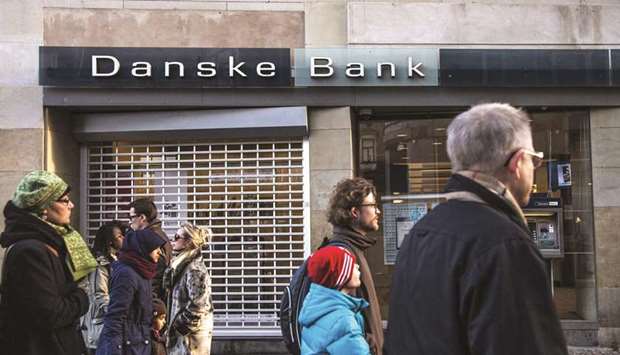Nasdaq Derivatives Markets on Friday put trading of derivatives tied to the Danish bank’s shares in a so-called stressed market condition. Doing so means the exchange can let market makers provide quotes using wider spreads.
Mikael Siewertz, product manager at Nasdaq in Stockholm, says it was the first time the exchange took such a step with Danske Bank.
He says Nasdaq is now bracing itself for more of the same when markets open today, though he also said he expects that cooler heads may have prevailed by then.
Danske Bank has become the target of intense speculation that it will be forced to pay hefty fines and possibly lose its chief executive officer, Thomas Borgen, amid allegations it served as a central pipeline in Europe for laundering billions of dollars, mostly from Russia.
The revelations have unnerved investors, triggering declines in Danske Bank’s stock and a spike in volatility.
Nasdaq’s Siewertz says the goal on Monday will be to “keep everything as calm as possible,” so that market makers don’t walk away again.
Wider spreads make it more difficult to strike a trade, often leaving retail investors in the lurch. By allowing market makers to operate with the kind of spread widening that comes when panic hits, Siewertz said the ultimate goal was to protect retail investors.
Danske is the target of criminal investigations in Denmark and Estonia, and Danish media reported last month that the US Treasury Department is looking “very closely” at the allegations. The Wall Street Journal said on Friday that US authorities were “probing” and “examining” the Danske case.
The Copenhagen-based bank is set to present the findings of its own probe on Sept 19. But lawmakers and analysts have warned against viewing that event as a conclusive assessment, and Business Minister Rasmus Jarlov has already said the Danske case is likely to drag on much longer.
For analysts watching Danske Bank, part of the difficulty is making sense of much of the reporting on the subject, according to Mattias Frithiof, a credit analyst at Swedbank AB in Stockholm.
Berlingske, the Danish newspaper that originally broke news of Danske’s alleged role in handling dirty money, has reported that as much as 53bn kroner, or $8.3bn, is under suspicion of having been laundered between 2007 and 2015.
Since then, the Wall Street Journal has reported that as much as $150bn flowed through Danske Bank during that period, though the newspaper doesn’t make clear how much of that can be considered suspicious.
“I think it is difficult to relate [such figures] to the amount of transactions that were related to money laundering,” Frithiof said. “While the headline numbers do sound large you have to compare them to the market in general.”
He says his calculations suggest that Danske’s share of overall flows through Estonia’s payment system from 2007 to 2015 represents somewhere between 5% and 10% of the total.
“So it is not obvious to me that the numbers are extraordinarily high,” Frithiof said. “But then again, I do not know exactly what the numbers refer to, so it is all speculation based on incomplete information.”
Danske has declined to comment on the reports, and spokesman Kenni Leth said on Friday that the bank is “looking forward to sharing conclusions from the investigations on Wednesday.”
Siewertz says he expects things to have calmed down by today. But if they haven’t, he said Nasdaq is ready to intervene again.
“We will certainly look at it on Monday morning,” he said.
The option of imposing such a measure has existed since January and Siewertz said the exchange has only used it two or three times.
The mechanism was introduced in connection with Europe’s revision of the Markets in Financial Instruments Directive, which took effect this year.



